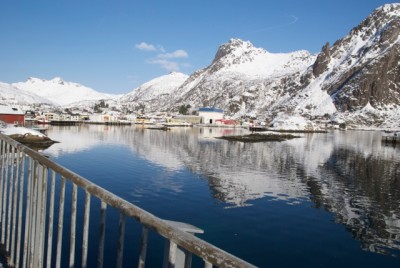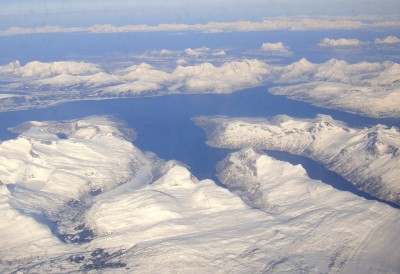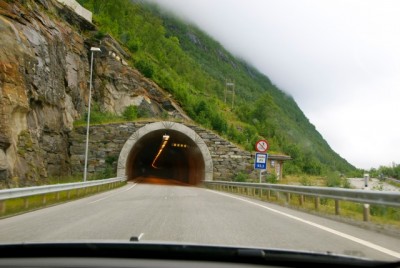Norwegian politicians continue to spend huge amounts of public funds on bridges, roads and tunnels in outlying areas that benefit as few as a hundred residents or less, while hundreds of thousands of commuters in metropolitan areas are left to face heavy traffic or unreliable public transit systems every day. Now much of the justification for the politicians’ priorities has been proven untrue and urban residents are demanding relief, but not much is in sight.

The politicians, especially those from the rural-friendly Center Party (Senterpartiet, Sp), have long argued that it’s important to spread national transport funds into outlying areas of Norway to help keep them populated. They’ve claimed that new bridges and tunnels to island communities, for example, are worth the investment to discourage depopulation by making life easier.
Wrong, reported Norwegian Broadcasting (NRK) this week after examining the results of 40 major transport projects all over Norway during the past 30 years. In fully 14 of the 19 bridge- or tunnel projects built in the northern counties and in Trøndelag, the communities that received road links to the mainland actually continued to lose population anyway.
In the scenic areas of Vesterålen and southern Troms County, for example, billions of kroner have been spent on roads, bridges and tunnels. In 1994, reported NRK, residents of the islands of Andørja and Rolla just south of Senja and east of Harstad, hoped a new bridge between Andørja and the mainland would bring more jobs and growth. Six years later, a tunnel also connected Andørja and Rolla, at a total cost of NOK 590 million (nearly USD 100 million).

Since then, though, one out of three residents has left the islands. The same thing has happened from Vardøya in Finnmark to Tjeldøya in Nordland, despite the huge infrastructure improvements that often have replaced ferry service. On Sundøya in Helgeland, the state spent NOK 176 million on a bridge to an island with 129 residents. Today the island has only 101 residents, but the former Center Party mayor who fought for the bridge is unrepentant. “Many objected to the bridge because it was a lot of money for few residents,” Erling-Rune Tømmervik told NRK. “But we’re as worthy as folks living other places. I’m happy for bridges to other small places, too.”
“When you build a bridge to a small island that’s not directly tied to a bigger town nearby, or there’s no business or industry that needs better transport, you can’t expect the bridge will have any major effect on the population,” Helge Brunborg, a senior researcher at state statistics bureau SSB, told NRK. He said it’s “naive” to think a permanent connection to the mainland will stop depopulation.

Transport Minister Marit Arnstad of the Center Party denies she’s naive and continued to defend the bridge and tunnel projects in remote areas live on national TV Monday evening. Even when confronted with evidence that the investment her party has pushed through in rural areas has not met its goals, Arnstad refused to back down. She continues to claim it’s still important to make such investments even if it improves the lives of just 100 people.
Now Norway’s left-center government of which the Center Party is a member has proposed spending more billions on a much-hyped “ferry-free” E39 highway from Kristiansand in the south all the way to Trondheim. Total investment is estimated at NOK 150 billion and the project, part of the National Transport Plan (NTP), will take 20 years to build.
It will include not only the world’s longest tunnel at 25 kilometers under the Boknafjord north of Stavanger, bit also the world’s longest suspension bridge over the Sognefjord. Some call not only the bridges and tunnels to tiny communities galskap (crazy), but the sheer scale of the E39 project is also viewed by many overly ambitious. “The districts must learn to tolerate that we need transport funding in central areas as well,” a frustrated Siri Engeseth of the Liberal Party (Venstre) told both NRK and newspaper Dagsavisen this week.
Engeseth, who works for environmental group Bellona, is tired of seeing tens of billions earmarked for outlying areas while badly needed rail and road projects in urban areas face endless delays. She wants to see the needs of hundreds of thousands commuters addressed first, with urban projects like the Intercity train line around Oslo and a rail line connecting Oslo’s old airport area at Fornebu with Bærum and Oslo “properly completed” before other ambitious projects are launched.
‘Pork-barrel politics’
Arnstad retorted that more than 60 percent of funding for the railroad is being earmarked for the Oslo metropolitan area, and a large chunk of funding for roads will be spent in southeast Norway. “If we assume the residents of western Norway will go along with the Intercity train line around Oslo, I hope residents of Oslo will go along with a ferry-free route for western Norway,” Arnstad said, suggesting that Engeseth wasn’t being “generous” enough with the districts.
Many of the transport projects in outlying areas are suspected of being pure “pork-barrel politics,” with government politicians and Members of Parliament pushing through projects for their home districts. Several are in Arnstad’s own home district of Trøndelag.
The national transport plan, due to be presented on Friday, also includes funds (around NOK 3 billion) to improve harbours around Norway, to encourage a shift of cargo to ships instead of trucks, and more than than NOK 5 billion for improvements to train line running between Oslo and Bergen. That project, talked about for 20 years, would cut travel time by about an hour and involves improved rail lines at Ringerike outside Oslo and Arna outside Bergen.
The politicians continue to discourage use of private cars, except in the districts, and many are making driving into Norwegian cities so difficult that motorists will leave their cars at home and take a bus, tram or train instead. Many already are, however, leaving public transport lines packed like never before with unreliable service.
Views and News from Norway/Nina Berglund
Please support our news service. Readers in Norway can use our donor account. Our international readers can click on our “Donate” button:

